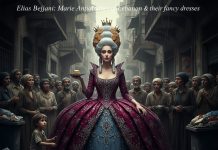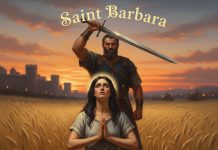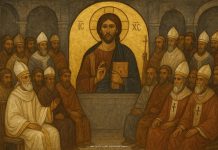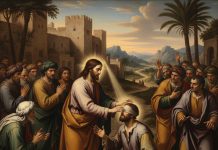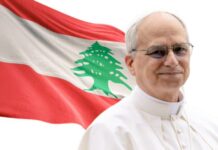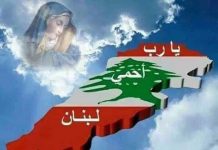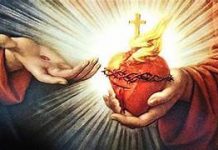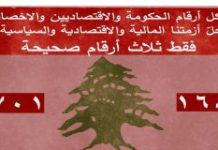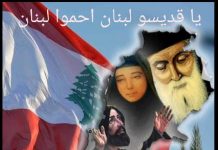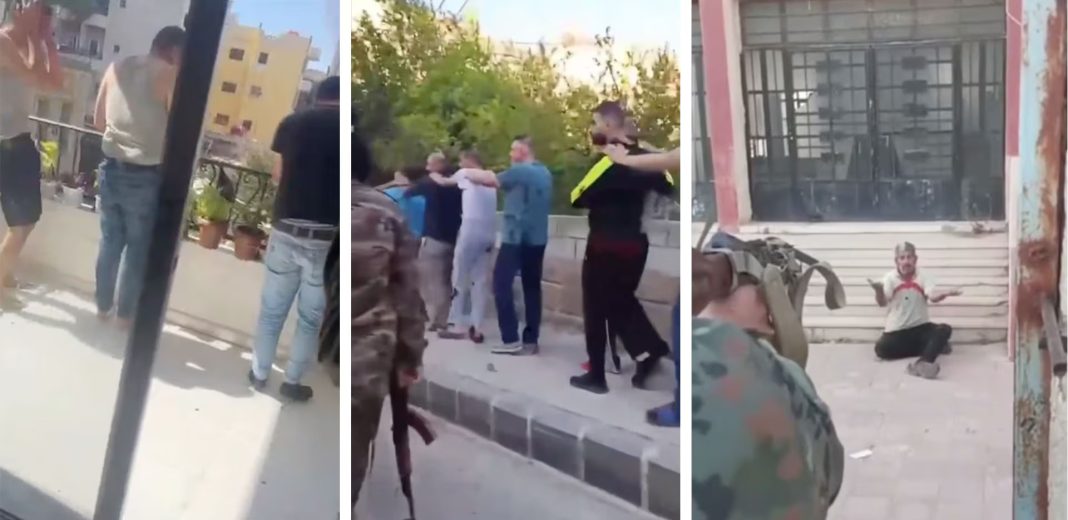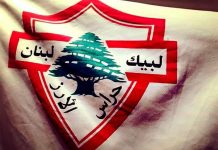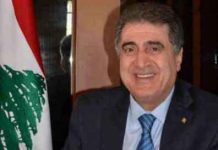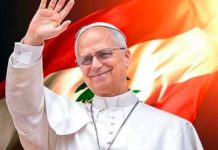How Syrian attackers killed: One hand on the gun, another on the camera
Deniz Uyar, Monica Naime and Pola Grzanka/July 29, 2025
قتلى لبنانيون في السويداء.. ضحايا “الواو الكافرة”؟
أسرار شبارو/الحرة/29 تموز/2025
السويداء: قتلة صوروا أنفسهم وهم يعدمون 12 مدنياً درزياً
المدن/29 تموز/2025
قالت وكالة “رويترز” في تقرير، إنها تحققت من 3 مقاطع مصوّرة تُظهر قيام مسلحين يرتدون لباساً عسكرياً، بإعدام 12 مدنياً عزلاً من الدروز، خلال الأحداث التي شهدتها المحافظة في وقت سابق من تموز/يوليو الجاري.
“هيا ارموا بأنفسكم”
ويظهر في أحد المقاطع، مسلحون يجبرون ثلاثة شبان على رمي أنفسهم من أعلى شرفة منزل، بعد أن قام مسلحان بإطلاق النار عليهم، واحداً تلو الآخر، لتتساقط جثثهم على الشارع في الأسفل. وقال صديق للعائلة وابن عم آخر لـ”رويترز”، إن الضحايا هم معاذ عرنوس وشقيقه براء عرنوس وابن عمهما أسامة عرنوس، وإن الفيديو أظهر مقتل الثلاثة في منزلهم جنوب مدينة السويداء في 16 تموز/يوليو. ولفتت الوكالة إلى أنها إلى أنها حددت الموقع الجغرافي للحوادث، وتم التحقق من الأحداث المصورة وتواريخها من خلال مقابلات مع سبعة من أقارب وأصدقاء الضحايا، وأعربوا عن اعتقادهم بأن قوات الحكومة السورية “قتلت احباءهم”.
هوية القتلة
وأوضح التقرير بأن “رويترز” لم تتمكن من تحديد هوية المهاجمين، أو تحديد من نشرها أولًا على الإنترنت. لكن مراجعة منشورات على مواقع التواصل الاجتماعي، أظهرت أن هذه اللقطات بدأت بالظهور على الإنترنت بعد 18 تموز/يوليو. ولم ترد المكاتب الإعلامية لوزارتي الدفاع والداخلية السوريتين على أسئلة “رويترز”، بشأن الهجمات المصورة من قبل القاتلين أنفسهم أو أشخاص آخرين برفقتهم. وأعلنت وزارة الدفاع السورية في 22 تموز/يوليو، أنها على علم بتقارير تفيد بارتكاب “مجموعة مجهولة” ترتدي زياً عسكرياً “انتهاكات صادمة وجسيمة” في السويداء، بينما ولم تذكر الوزارة أي عمليات قتل على غرار الإعدام استهدفت الدروز. وتعهدت الوزارة بالتحقيق في الانتهاكات وتحديد المسؤولين عنها وفرض “أقصى العقوبات” على مرتكبيها “حتى لو كانوا تابعين لوزارة الدفاع”. وذكرت الشبكة السورية لحقوق الإنسان، أن 1013 شخصاً قُتلوا في المواجهات منذ 13 تموز/يوليو، بينهم 47 امرأة و26 طفلًا وستة من الكوادر الطبية. وأوضحت أن معظم الضحايا من الدروز، مشيرةً إلى أنه لم يتضح عدد المقاتلين أو المدنيين. وأوضحت الشبكة أن الغالبية العظمى منهم لقوا حتفهم بعد أن أدى وصول الجيش السوري إلى تصعيد حاد في القتال.وقال مدير الشبكة فضل عبد الغني لـ”رويترز”، إن المنظمة وثقت عمليات قتل بأسلوب الإعدام نفذتها القوات السورية ومقاتلون بدو وجماعات درزية، فيما قال طبيب شرعي في مدينة السويداء، طلب عدم ذكر اسمه، إنه فحص 502 جثة تم نقلها إلى مستشفى السويداء الوطني خلال أعمال العنف الطائفي في تموز/يوليو.
قتلى لبنانيون في السويداء.. ضحايا “الواو الكافرة”؟
أسرار شبارو/الحرة/29 تموز/2025
منذ عام 2011، حينما تورّط “حزب الله” عسكريا في دعم بشار الأسد، لم يغب اللبنانيون عن خطوط النار السورية. تتجدد فصول هذه المأساة مع كل دم يسيل في الأراضي السورية، وكأن “وحدة المسار والمصير” التي سوق لها نظام البعث، بمثابة “لعنة” تلاحق اللبنانيين والسوريين معا، وتربط بين سوريا ولبنان بـ”واو كافرة”، بحسب قول شهير للكاتب اللبناني سعيد تقي الدين.
بصوت يصدح بالتحدي، ظهر الشاب اللبناني مصطفى مليحان في مقطع مصوّر، سلاحه يلمع في يده، معلناً مشاركته في المعارك الطاحنة التي شهدتها محافظة السويداء جنوب سوريا، بين مقاتلين من أبناء الطائفة الدرزية ومسلحين من العشائر العربية وقوات حكومية.
“شباب وادي خالد من السويداء… راجعين منتصرين بإذن الله”، هذه كانت كلماته قبل أن يعود بعد أيام جثة بكفن إلى بلدته الرامة في وادي خالد شمالي لبنان.
مصطفى، البالغ من العمر ثمانية وعشرين عاماً، الأب لثلاثة أطفال، لم يُخبر عائلته بنيته التوجه إلى السويداء. كان يقيم في حمص، حيث افتتح متجرا للمواد الغذائية. وحين التقى والده به قبل مقتله بيومين في عزاء بحمص، لم يعلم الوالد المكلوم أنها ستكون المرة الأخيرة: “خسارة ابني لا تعوّضها الكرة الأرضية”، بعبارة واحدة يختصر الأب حزنه، وقد أثقل كاهله سؤال صعب: “ما الذي دفع ابني إلى الموت في سوريا؟”.
لم يكن مصطفى مليحان سوى قصة واحدة من قصص كثيرة تكشف عن تورّط لبناني متزايد في الصراع السوري.
تداول ناشطون مقاطع مصوّرة تظهر شباناً لبنانيين آخرين يقاتلون إلى جانب العشائر العربية في سوريا، خصوصاً بعد إعلان الأخيرة “النفير العام”، كما كانت هناك أخبار عن سقوط ضحايا مدنيين دروز لبنانيين كانوا في زيارة عائلية في السويداء.
هذا التورّط لم يأتِ من فراغ؛ فالروابط العشائرية والطائفية تتجاوز الحدود، لتضع الهوية الوطنية اللبنانية على المحك.
بلغت التوترات ذروتها في لبنان، حين دعا الشيخ نبيل رحيم، عضو “هيئة العلماء المسلمين” في طرابلس، شباب أهل السنة في لبنان إلى الاستعداد التام لتلبية نداء “القيادة في سوريا” في حال طلبت مدداً من الرجال، ودعا إلى “إسقاط الحدود”.
في المقابل، أعلن الوزير اللبناني السابق وئام وهاب، رئيس “حزب التوحيد العربي” المقرب سابقاً من نظام الأسد، عن تشكيل مجموعة مسلّحة باسم “جيش التوحيد” للدفاع عن الدروز.
في خضم هذه الدعوات المتضاربة، ينفي الحاج مليحان، والد مصطفى، ما تداولته بعض وسائل الإعلام حول امتلاك ابنه الجنسية السورية أو انتمائه إلى جهاز الأمن العام السوري.
وأكد أن “الادعاءات التي روّجت غير صحيحة”، وأن العائلة تنتمي إلى عشيرة الغنّام، ذات الجذور الممتدة تاريخياً بين لبنان وسوريا والأردن والعراق والسعودية.
وشدد على أن “الوقوف إلى جانب المظلوم واجب”، لكن عشائر سوريا لا تحتاج للدعم، إذ “يبلغ عددهم عشرة ملايين، وإن قاتل عشرة آلاف من كل مليون، فسيكون لديهم مئة ألف مقاتل”.
من جانبه، يؤكد أمين سر مجلس العشائر العربية في لبنان، أحمد الشيخ، أن مشاركة الشباب اللبنانيين في أحداث السويداء كانت ضمن “مبادرات فردية”.
ورغم المشاهد المؤلمة التي انتشرت من سوريا، والتي ولّدت تضامناً واسعاً، لم تُترجم إلى إعلان نفير أو دعوة لمشاركة عسكرية، بحسب الشيخ، الذي يشير إلى أن “من شاركوا هم من أبناء قرى وادي خالد الواقعة داخل الأراضي السورية، حيث تقيم عائلات لبنانية منذ عقود”.
كذلك يؤكد أمين عام ديوان العشائر العربية في لبنان، جهاد المانع، أن العشائر العربية “جزء من النسيج العربي الواسع، لكنها لم تعلن النفير”، وأن عشائر سوريا قادرة على الدفاع عن نفسها، وفي السويداء وحدها يوجد أكثر من 45 ألف مقاتل.
ويرفض المانع التدخل في الشؤون الداخلية السورية، أو أي تدخل سوري في شؤون لبنان، لكنه يلفت إلى أن “الروابط العائلية والاجتماعية بين البلدين قد تدفع بعض الأفراد إلى اتخاذ قرارات فردية خارج الإطار العشائري المنظم”.
وكان ديوان العشائر العربية قد أصدر في 19 يوليو بياناً نعى فيه مليحان، واصفًا إياه بـ”شهيد العشائر العربية” و”البطل المغوار”، وسبق ذلك بيان آخر صدر في 17 يوليو، أعرب فيه الديوان عن إدانته لما يتعرّض له أبناء عشائر العرب في سوريا، واصفاً ما يحدث بـ “الإبادة”.
على صعيد التوترات السياسية في لبنان، يوضح المانع أن “الخلاف ليس مع الطائفة الدرزية، فهم إخوتنا وشركاؤنا في الوطن”، بل “هو موجه ضد وئام وهاب الذي يدعو إلى تدخل إسرائيلي في دولة عربية”.
في المقابل، يصف المانع الزعيم الدرزي وليد جنبلاط، بـ “الرجل الحكيم الذي أنقذ لبنان من فتنة، وكان واعياً لخطورة تصرفات وهاب”.
وينفي مدير “مركز الديمقراطية للدراسات السياسية والاستراتيجية”، الدكتور غسان بو دياب، من جهته، توجه شبان لبنانيين من الطائفة الدرزية إلى محافظة السويداء.
“لم يتوجّه أحد من الدروز في لبنان إلى السويداء، وهم يلتزمون سيادة الدول وحدودها. من الطبيعي أن يتضامنوا ويدعوا لأهلهم هناك، لكن دون أي تجاوز قانوني أو جغرافي. حتى من حاولوا العبور من إسرائيل، عادوا أدراجهم ولم يصلوا إلى السويداء”، معتبراً أن المسألة لا تتعلق بتحركات أفراد فقط، بل تمسّ سيادة الدول.
وفي ما يتعلق بدعوة الوزير السابق وئام وهاب إلى تشكيل “جيش التوحيد”، يوضح بو دياب أن وهاب “أكد بنفسه أنه لم يدعُ إلى تشكيل هذا الجيش في لبنان، بل أشار إلى إمكانية إنشائه داخل الأراضي السورية، وتحديداً في محافظة السويداء”، ويتابع “لا أعلم إن كان أبناء الطائفة في سوريا يريدون مثل هذا التشكيل، لكن ما أعرفه يقيناً أن المرجعيات الدرزية في لبنان ترفض أي خرق للحدود الدولية”.
ويحذّر المحلل السياسي جورج العاقوري من خطورة تقديم الولاء للطائفة أو العشيرة أو العقيدة على حساب الولاء للوطن.
ويشدد على أن دفاع الدروز أو السنة في سوريا عن أنفسهم هو “مسؤولية سورية داخلية لا تعني اللبنانيين”. ويشير إلى أن “الدعوة إلى القتال أو التحريض عليه من لبنان باتجاه سوريا أمر مرفوض جملةً وتفصيلاً”.
ويقول غسان بو دياب إن “الدروز لم يكونوا يوماً دعاة حروب أو مشعلي فتن، بل كان موقفهم واضحاً دائماً: الدفاع عن الأرض والعِرض فقط. في السويداء، لم يسقط أي شهيد درزي من خارج حدود المحافظة، وأكثر من خمسين ألف درزي رفضوا الالتحاق بالخدمة في جيش النظام السوري السابق، لأنهم رفضوا قتل إخوتهم السوريين”. من الناحية القانونية، تؤكد المحامية والناشطة الحقوقية ديالا شحادة لموقع “الحرة”، أن “مشاركة أي مواطن لبناني، مهما كانت خلفيته أو انتماؤه، في القتال خارج إطار القوات العسكرية النظامية اللبنانية، تعدّ شكلاً من أشكال الارتزاق، يعاقب عليه بموجب القانون الدولي، وتدرج ضمن الجرائم المعاقب عليها في القانون اللبناني، مثل الانتماء إلى عصابة مسلّحة”. وتشير إلى أن القانون لا يميّز بين من يقاتل إلى جانب جيش نظامي أو ضده، طالما أن الشخص يشارك في نزاع مسلح خارج بلاده. كما يجرّم قانون العقوبات اللبناني، بحسب شحادة، “كل ما من شأنه تعكير صفو العلاقات مع دولة شقيقة، بما في ذلك التحريض عليها أو الدعوة إلى أعمال عدائية ضدها، سواء كانت ذات طابع أمني أو عسكري أو اقتصادي”. وتختم شحادة بالإشارة إلى أن النصوص القانونية في هذا المجال “واضحة وصريحة، لكن الواقع في لبنان يكشف عن ازدواجية فاضحة في تطبيق القانون، إذ لم نشهد أي تحرّك قضائي لمحاسبة اللبنانيين الذين قاتلوا إلى جانب نظام الأسد، في حين جرت ملاحقة من قاتلوا ضده”.
How Syrian attackers killed: One hand on the gun, another on the camera
Deniz Uyar, Monica Naime and Pola Grzanka/July 29, 2025
https://www.reuters.com/world/how-syrian-attackers-killed-one-hand-gun-another-camera-2025-07-29/
Reuters verified three videos in which gunmen wearing military fatigues carried out the execution-style killings of 12 unarmed Druze civilians in southern Syria earlier this month. The footage was filmed by the killers themselves or people accompanying them.
The fighters in military-style uniforms pointed their rifles at the three unarmed men and ordered them out onto a sunny balcony, before barking at them to pause. “One minute. You want to film them?” one of the attackers asked his comrade.
The unfolding horror, which was already being filmed by one gunman on his cellphone, was delayed for a few moments to allow a second fighter to start capturing the events.
“Let’s go! Throw yourself over,” the gunmen yelled at their victims, members of Syria’s minority Druze faith.
Two of the attackers shot the men one by one as they clambered over the black railing before their bodies tumbled to the street below, according to the footage circulating on social media which was reviewed by Reuters.
The victims were Moaz Arnous, his brother Baraa Arnous and their cousin, Osama Arnous, according to a family friend and another cousin who both told Reuters the video showed the three being killed at their home in the southern city of Sweida on July 16.
The deaths were among 12 execution-style killings of unarmed Druze civilians carried out at three sites in and around Sweida this month by gunmen wearing military fatigues, according to the footage of the attacks, which was filmed by the killers themselves or people accompanying them and verified by Reuters.
Another video shows Mounir al-Rajma, a 60-year-old guard at a communal water well, being gunned down by two young fighters after telling them he is Druze, his son Wiam told Reuters. Other footage shows a group of fighters forcing eight civilians to kneel in the dust of a roundabout before shooting them dead, according to a friend and a relative of some of those victims.
The videos provide some of the most detailed depictions yet of the bloodshed that erupted in Sweida province in mid-July, initially between local Druze militia and Bedouin tribal fighters and subsequently government forces sent to restore order. The violence killed hundreds of mostly Druze people, according to Reuters reporting and two monitoring groups.
Reuters was able to use visible landmarks in each video to geo-locate the incidents. The events depicted and their dates were verified through interviews with seven relatives and friends of the victims. All said they believed Syrian government forces killed their loved ones.
The news agency could not identify the attackers in the videos, which were not time-stamped, or determine who first posted them online. The pieces of footage began appearing online after July 18, a review of social media posts found.
The media offices of the Syrian defence and interior ministries didn’t respond to questions from Reuters on the filmed attacks.
Syria’s defense ministry said on July 22 that it was aware of reports that an “unknown group” wearing military fatigues committed “shocking and gross violations” in Sweida. It didn’t mention execution-style killings targeting Druze people.
The ministry vowed to investigate the abuses, identify those responsible and impose “maximum penalties” on perpetrators, “even if they are affiliated with the ministry of defense.”
On the same day, the interior ministry condemned “in the strongest terms the circulating videos showing field executions carried out by unidentified individuals in the city of Sweida”.
RIGHTS GROUP: AT LEAST 1,000 DEAD
Syria has been plagued by bouts of sectarian strife since the sudden fall of President Bashar al-Assad and his police state in December last year after 14 years of war. The new government, led by a former Sunni Islamist group that has its roots in global jihad, dissolved Assad’s army and sought to integrate dozens of former rebel factions into a national army, but those forces have struggled to fill the security vacuum.
Sweida province is predominantly populated by the Druze community, a distant offshoot of Islam that comprises about 3% of Syria’s pre-war population of 24 million. The atrocities there came four months after a spree of killings against the Alawite minority, with armed factions affiliated to the new government killing hundreds of people in coastal settlements.
The Sweida unrest began on July 13 when longstanding local tensions over land and resources in the province escalated into clashes between local Druze militia and Bedouin tribal fighters, who like government forces largely adhere to the country’s majority Sunni faith.
The violence worsened significantly after the Syrian military was deployed to the province on July 14 to quell the clashes and entered Sweida city itself on July 15, according to residents, two war monitors and reporters on the ground.
The Syrian Network for Human Rights said 1,013 people have been killed in the bloodshed since July 13, including 47 women, 26 children and six medical personnel. The group said victims were mainly Druze, adding that it wasn’t clear how many were fighters or civilians. The network said the vast majority died after the army’s arrival led to a sharp increase in fighting.
The organization’s head, Fadel Abdulghany, told Reuters it had documented execution-style killings by Syrian troops, Bedouin fighters and Druze groups.
A forensic pathologist in the city of Sweida, who requested anonymity to speak about sensitive matters, told Reuters he had examined 502 bodies that had been brought to the Sweida National Hospital during this month’s violence.
One was decapitated and two, including a teenage girl, had their throats slit. Most of the others suffered from gunshot wounds inflicted at close range, he said.
Reuters could not independently verify the numbers or specific atrocities recounted by the Syrian network and the pathologist.
‘ARE YOU MUSLIM OR DRUZE?’
The son of Rajma, the 60-year-old water well guard, identified his father in a video verified by Reuters as having been filmed on July 15 outside the Muhammad Salih Nasr School in the town of Thaalah, less than a mile from their home.
Rajma is seen sitting on the steps of the school’s entrance as at least three young rifle-toting men in military fatigues are heard repeatedly screaming at him, “Are you Muslim or Druze?” The exchange is filmed by someone standing directly next to the fighters and it is unclear if the person is also armed.
When the older man answers, “I’m Syrian”, one fighter responds: “What does Syrian mean? Muslim or Druze?”
Rajma says: “My brother, I’m Druze.”
Three of the fighters immediately open fire.
“This is the fate of every dog among you, you pigs,” one of them says.
In another video verified by Reuters, a group of seven fighters in military fatigues carrying rifles are seen guiding eight men in civilian clothes down a sidewalk. Based on the shop signs and road layout, Reuters identified the street as lying just west of Tishreen Square in the heart of Sweida city.
The only visible insignia on the fatigues is a small black patch on the right arm of one of the fighters bearing the Islamic declaration of faith in a design popularized by the Islamic State group. Reuters reporters have also seen some soldiers at checkpoints in government areas wearing them.
This is the fate of every dog among you, you pigs.
Syrian attacker
Syria’s defense and interior ministries didn’t respond to questions on whether their forces wear the patches.
The Islamic State did not mention Sweida in any of their posts on their social media propaganda channels, including in the period after July 13. Reuters couldn’t reach a representative for the group.
A few seconds into the video, the fighter filming turns his phone camera around to his own face: He’s a bearded man dressed in military fatigues, with a red bandana wrapped around his head and the butt of a rifle visible across his chest.
The eight victims walk in single file, each resting his hands on the shoulders of the man in front. The last man in line, wearing a tan shirt and sandals, was identified by a friend who watched the video as Hosam Saraya, a 35-year-old Syrian-American citizen. The friend said the older man directly in front of him in line was Hosam’s father, and the next man was Hosam’s brother Kareem. Most of the others were from the same extended family, the friend added.
Dima Saraya, the wife of Ali Saraya – another of the men in line – told Reuters that armed men in military fatigues had surrounded the apartment building where the extended Saraya family lived west of Tishreen Square on July 16 and demanded that the men inside surrender themselves, promising to question them for a few hours and return them home safely.
U.S. Senator James Lankford of Oklahoma confirmed that Hosam, who had lived in Oklahoma, “was tragically executed alongside other members of his family in Syria.” He didn’t give further details.
A separate video shows the same eight unarmed men kneeling in the dirt of a roundabout in Tishreen Square. Reuters was able to verify the video’s location from the statue in the roundabout and a tower block visible directly behind it.
The same friend identified Hosam, his brother and his father among the kneeling men in the second video. At least two fighters fire their rifles directly at the kneeling group, from close proximity and for at least seven seconds.
The kneeling men crumple into the dirt and lie motionless as the armed men yell, “God is great.”
The Reuters Daily Briefing newsletter provides all the news you need to start your day. Sign up here.
*Video verification by Deniz Uyar, Monica Naime and Pola Grzanka. Video editing by Holly Murtha, Francesca Lynagh and Emma Jehle. Photo editing by Simon Newman. Design by Catherine Tai and John Emerson. Edited by Pravin Char.
Our Standards: The Thomson Reuters Trust Principles.


